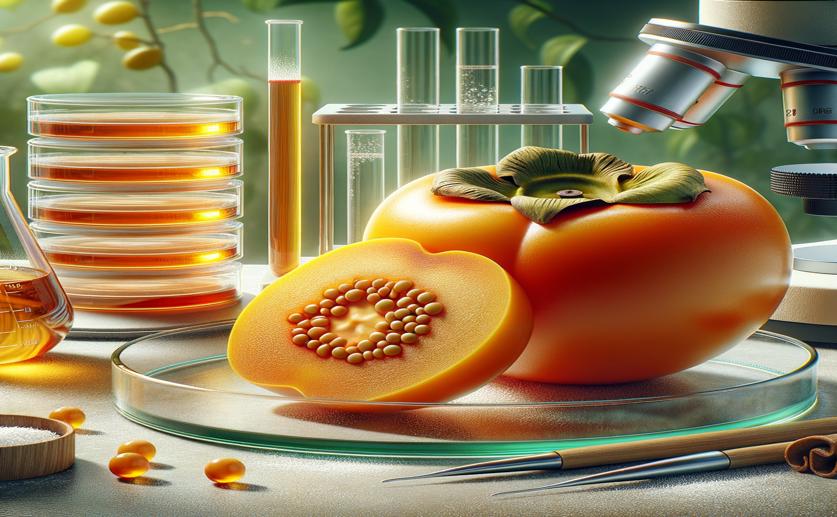
Discovering New Natural Food Preservatives from Persimmon Yeast
Jenn Hoskins
7th April, 2024

Image Source: Natural Science News, 2024
Key Findings
- Researchers at Bina Nusantara University found that yeast M. persimmonesis can protect food from spoilage
- M. persimmonesis produces pulcherrimin, a compound with strong antimicrobial properties
- The yeast is safe for use, showing no toxicity in zebrafish and human cell line tests
References
Main Study
1) Secondary metabolites and transcriptomic analysis of novel pulcherrimin producer Metschnikowia persimmonesis KIOM G15050: A potent and safe food biocontrol agent.
Published 15th April, 2024 (future Journal edition)
https://doi.org/10.1016/j.heliyon.2024.e28464
Related Studies
2) Characterization of a novel yeast species Metschnikowia persimmonesis KCTC 12991BP (KIOM G15050 type strain) isolated from a medicinal plant, Korean persimmon calyx (Diospyros kaki Thumb).
3) Yeast metabolic engineering for the production of pharmaceutically important secondary metabolites.
4) The whole-genome sequence of the novel yeast species Metschnikowia persimmonesis isolated from medicinal plant Diospyros kaki Thunb.



 18th January, 2024 | Jim Crocker
18th January, 2024 | Jim Crocker